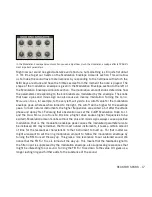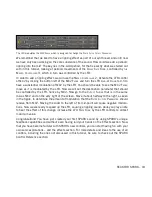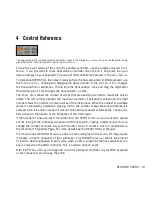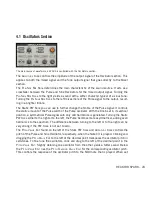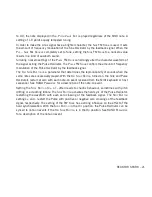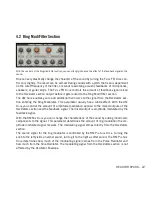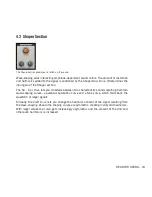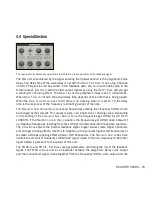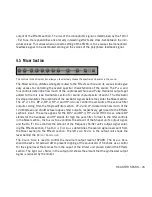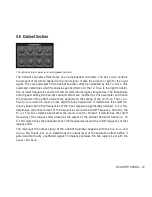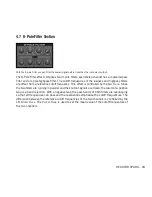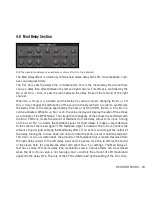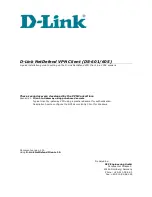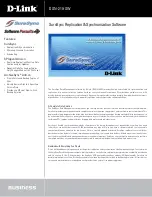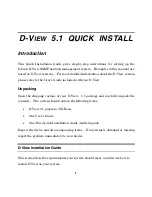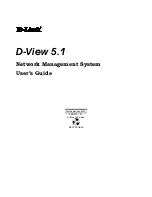
REAKTOR SPARK – 14
modulated Pulse signal to the output. When we play the notes a bit longer, we noticed slight
oscillations in the timbre. This is partly the result of the feedback loop and our settings for
the
FM K
nobS
. From a psychoacoustic perspective these slight modulations in the timbre go
a long way to make the human ear perceive sounds as full and dynamic, especially when the
pitches of the oscillators are not the same.
With the right ‘P’
V
alue
e
Dit
you can adjust the pitch of the Sine oscillator; with the left ‘P’
V
alue
e
Dit
you can
adjust the pitch of the Pulse oscillator.
Now we will see if what we said was true and transpose the pitch of the Pulse oscillator up 7 semitones by clicking
and dragging the
p
itch
V
alue
e
Dit
that is to the left of the
pW K
nob
to 67.01. Clicking and dragging in front of the
decimal point transposes the pitch in semitones, clicking and draggin behind the decimal point transposes the pitch
in cents. So, we can also detune the Sine oscillator by dragging the digits behind the decimal point in the
p
itch
V
alue
e
Dit
to the right of the
pW K
nob
.
When transposing the Sine pitch from 60.00 to 59.88, oscillations of the amplitude
appear from the interference of the detuned pitches. Notice though, that although the oscillators have two different
pitches, only one pitch is readily perceived and the two oscillators merge together to create one sound. The detun-
ing and modulation of pitches is a psychoacoustic trick to make sounds merge together and have a “fatter” timbre.
The Shaper section allows you to fatten up the sound.
This is a good moment to inspect the shaper effect. This nonlinear effect is very powerful if
used within a feedback loop. If you turn up the
D
riVe
p
araMeter
and play with the
S
at
-S
ine
and
2nDh K
nobS
you can see the potential for fat and funky sounds. For now we leave the
S
at
-S
ine
and
2nDh K
nobS
in their zero position and set the
D
riVe
K
nob
to 14.
Summary of Contents for Reaktor Spark
Page 1: ...MANUAL...

















